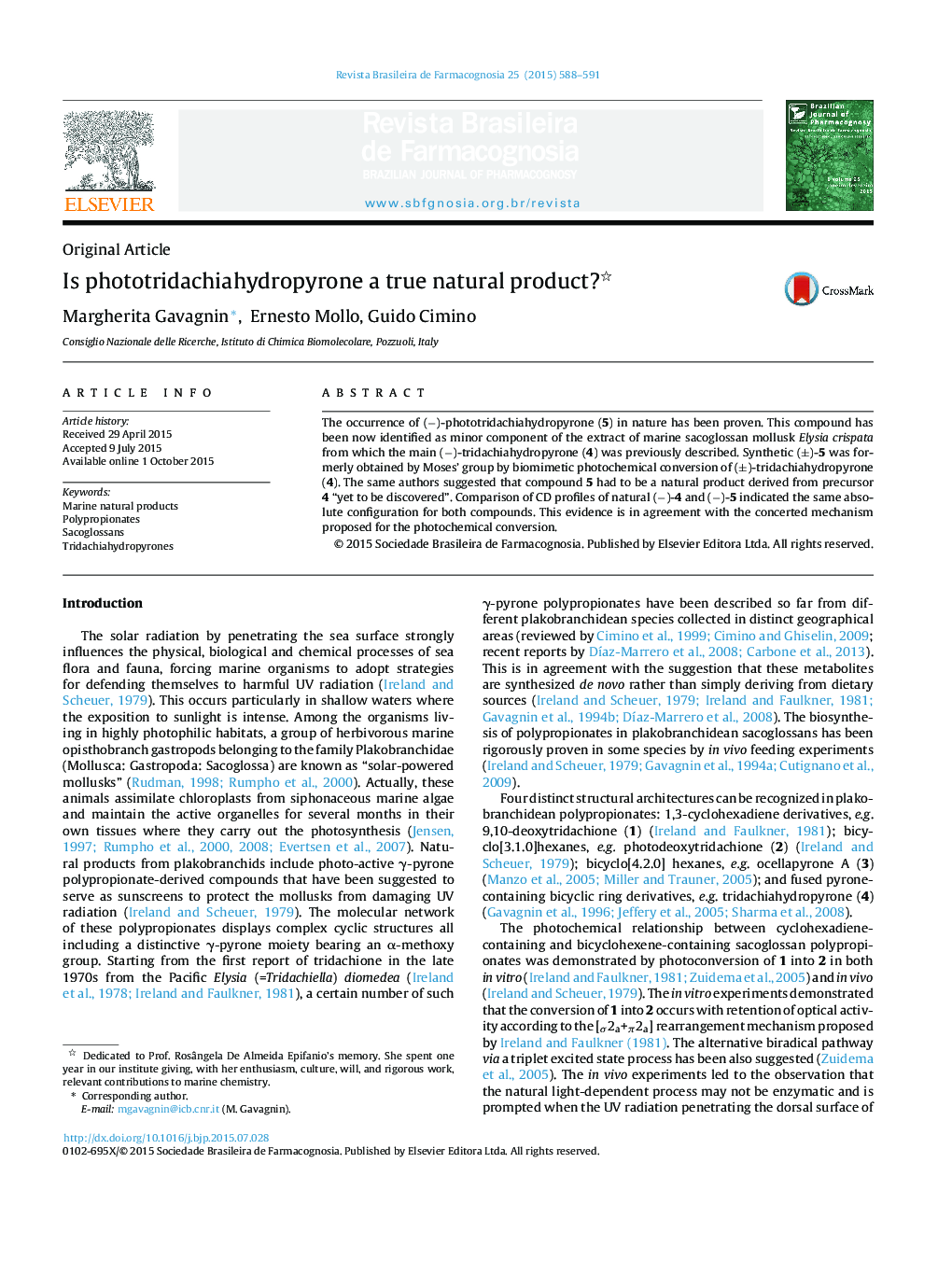| Article ID | Journal | Published Year | Pages | File Type |
|---|---|---|---|---|
| 2577554 | Revista Brasileira de Farmacognosia | 2015 | 4 Pages |
The occurrence of (−)-phototridachiahydropyrone (5) in nature has been proven. This compound has been now identified as minor component of the extract of marine sacoglossan mollusk Elysia crispata from which the main (−)-tridachiahydropyrone (4) was previously described. Synthetic (±)-5 was formerly obtained by Moses’ group by biomimetic photochemical conversion of (±)-tridachiahydropyrone (4). The same authors suggested that compound 5 had to be a natural product derived from precursor 4 “yet to be discovered”. Comparison of CD profiles of natural (−)-4 and (−)-5 indicated the same absolute configuration for both compounds. This evidence is in agreement with the concerted mechanism proposed for the photochemical conversion.
Graphical abstractThe occurrence of (−)-phototridachiahydropyrone in nature that was suspected on the basis of extensive photochemical studies on γ-pyrone propionates from marine sacoglossan mollusks has been proven. This compound is a minor metabolite of Elysia crispata.Figure optionsDownload full-size imageDownload as PowerPoint slide
